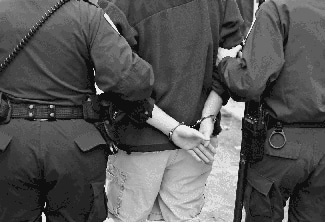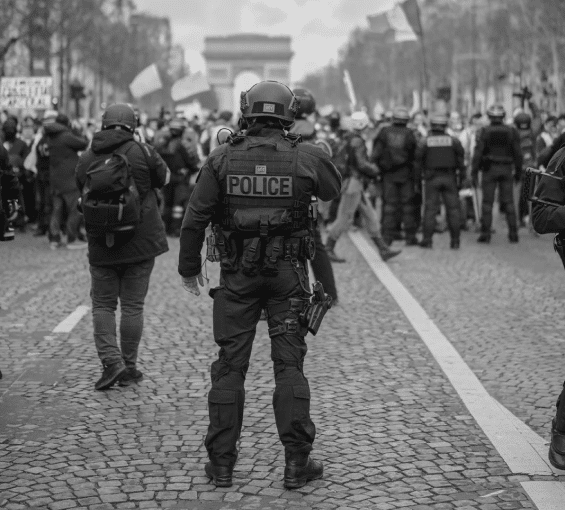What Is Stop-and-Frisk?
Stop-and-frisk is a controversial police tactic that allows law enforcement to stop and search individuals they suspect may be involved in criminal activity. The practice has come under fire for potential racial bias and links to police brutality.
Content Last Updated: October 13, 2025
Stop-and-frisk is a controversial police tactic that departments have used for decades throughout the United States. But what is stop-and-frisk, and what are the implications of this practice?
In simple terms, stop-and-frisk allows law enforcement to stop and search individuals—without objective evidence of a crime—who they suspect may be involved in criminal activity. The policy has been a major contributor to the current issue of police brutality, as it often enforces the arbitrary targeting of ethnic minorities.
While not all officers use stop-and-frisk in a discriminatory manner, the practice has been linked to multiple civil rights abuses. If you or a loved one has been affected by an unjust stop-and-frisk incident, Police Brutality Center can connect you with a legal professional who can help protect your rights.
What Is Stop-and-Frisk?
The intended purpose of stop-and-frisk is to prevent crime. If an officer notices that someone is behaving in a way that suggests involvement with criminal activity, they may stop them to investigate further. In theory, this policy would make potential criminals think twice before committing a crime.
Stop-and-frisk likely has a long history of use in the United States, but it wasn’t until 1964 that the phrase was first officially recorded in a law. In the decade leading up to this mention, police departments nationwide—from San Francisco to New York City—had begun to expand their efforts to proactively fight crime by performing street stops on people they deemed suspicious.
Cincinnati was among the first cities to implement a campaign resembling modern stop-and-frisk practices. In 1958, the Cincinnati Police Department targeted the predominantly Black neighborhood of Avondale with a crime prevention program in which officers interrogated people on the street and placed their information in a file. When crimes occurred later in the neighborhood, officers would search the files for potential suspects. They would then target those suspects for further interrogation.
Civil rights organizations complained to city officials about the program, but police departments nationwide continued to adopt similar practices. For example, in the 1960s, Chicago Police Department Superintendant Orlando Wilson pushed for a “proactive policing” policy that resulted in officers targeting Black communities and heightening surveillance in those areas. Stop-and-frisk was at the forefront of those efforts
Definition of Stop-and-Frisk
A stop-and-frisk involves two fundamental components: a stop and a frisk. A stop occurs when an officer of the law, based on reasonable suspicion, temporarily detains an individual for questioning or investigation. Officers frisk, or pat the individual down, searching the outer garments for weapons or other unlawful items.
The U.S. Constitution’s Fourth Amendment governs the legality of stop-and-frisk. The amendment provides that individuals have the right to be free from unreasonable searches and seizures. The Supreme Court affirmed the constitutionality of stop-and-frisk in the landmark 1968 case, Terry v. Ohio, which is where the practice’s nickname, “Terry stop,” originated.
In the Terry v. Ohio case, the court decided that a reasonable stop-and-frisk is one in which an officer believes that the safety of themself or another person is endangered by someone who may be armed and dangerous. Officers may then make a reasonable search for weapons to protect themselves and others.


What Is an Acceptable Stop-and-Frisk Under the Law?
Despite its controversial nature, stop-and-frisk is permissible when a police officer has a reasonable suspicion that a person is involved in a crime and was armed.
Reasonable suspicion involves a particular set of facts or circumstances that lead an officer to believe that a person is involved in criminal activity, justifying the stop. Furthermore, the officer may conduct a pat-down search for weapons if they have reason to believe the suspect is armed and dangerous. The officer must not simply have a hunch—rather, they must be able to make specific reasonable inferences of criminal activity based on behavior that they witness.
There are a variety of situations that can justify an initial stop. A person who displays any of the following behaviors or characteristics, among others, could potentially be the target of a police stop:
- Being present near the scene of a recent crime
- Appearing intoxicated
- Loitering or appearing to look for something
- Closely matching the description of a suspect
- Running away
The circumstances of the stop then dictate whether a frisk is justified. Examples include if the officer is alone without backup, the suspect provides strange answers to questions, or if there are potential risks of injury to the officer or another person.
During a frisk, the officer should only look for a weapon or other dangerous item. They can’t reach into the person’s pockets unless they feel something like a weapon or another illegal item, based solely on their touch. They also can’t forcibly open bags or search a person’s car. The frisk should only be performed using the officer’s hands, and the officer may only check the outside of the person’s clothing.
The officer should conduct the frisk in a relatively quick manner. To avoid police misconduct, the officer should only take as long as necessary to pat down the suspect’s outer clothing. The officer doesn’t have the authority to conduct a more extensive or intrusive search unless they feel a weapon or contraband on the person’s body.
Is Stop-and-Frisk a Form of Police Brutality?
Stop-and-frisk isn’t inherently a form of police brutality, and its intended purpose is not to be aggressive or oppressive. However, it has become controversial as many instances of stop-and-frisk have been linked to racial profiling.
For example, New York City’s police department has become notorious for targeting minority individuals with stops-and-frisks. A New York Civil Liberties Union study found that between 2003 and 2022, 90 percent of stop-and-frisk targets in New York City were people of color, specifically Black and Latinx individuals. The NYPD stopped Black people roughly eight times more often than white people. NYPD officers were also four times more likely to stop Latinx people than white people.
Furthermore, NYPD officers disproportionately used force against Black and Latinx individuals. This is where the line between stop-and-frisk and police brutality can become blurry. There have been numerous accusations of police officers using excessive force during stop-and-frisks, and many of these cases involved injury or death to the targeted individual.

The Mental Effects of Stop-and-Frisk
Because of the low burden of proof placed on officers to conduct a stop-and-frisk, police often make arbitrary and unnecessary decisions to conduct these searches. Innocent people are often wrongfully targeted, stopped, and searched, resulting in lasting effects on their mental health.
In the short term, being the target of a stop-and-frisk can cause a person to feel fear, anxiety, and shame. As the experience becomes embedded in the victim’s memory, long-term mental health issues, such as depression, post-traumatic stress symptoms, and hypervigilance, can arise. The victim may no longer feel safe in their community or around police due to the fear of a stop-and-frisk happening again.
The mental health repercussions of stop-and-frisk also extend to the person’s greater community. Individuals who have never been personally affected by a stop-and-frisk may fear being targeted by the police. This can contribute to widespread distrust of the police, resulting in a culture where people are less likely to seek help from the police when needed.
What To Do if The Police Stop You
If the police stop you, remaining calm and respectful is important. In addition, do the following:
- Ask whether you are being detained or free to go: You have the right to ask if you are free. If the officer says no, ask them if you are under arrest.
- Be careful about the questions you answer: You don't have to answer any of the officer's questions. You have the right to refuse to speak to them.
- Know your rights if they request a search: The officer may have the authority to pat you down, but you can turn down a more thorough search of your body or property.
- Write down the details: Document the officer's name, badge, number, and police department. This information will be necessary if you decide to take legal action later.
- Avoid escalating the situation: Even if you believe your rights are being violated, it's best to cooperate with the officers when you are stopped. Don't physically resist, run away, or lie. This will help ensure your safety.
- Remain silent if you're arrested: If you get arrested, tell the officer that you wish to remain silent, then call a criminal defense attorney or ask to speak with a public defender. Your attorney will advise you of your next steps to avoid incriminating yourself.
If your rights are disrespected at any point in the process—regardless of whether you were arrested—consider hiring a civil rights lawyer. Get legal help today by contacting Police Brutality Center.
